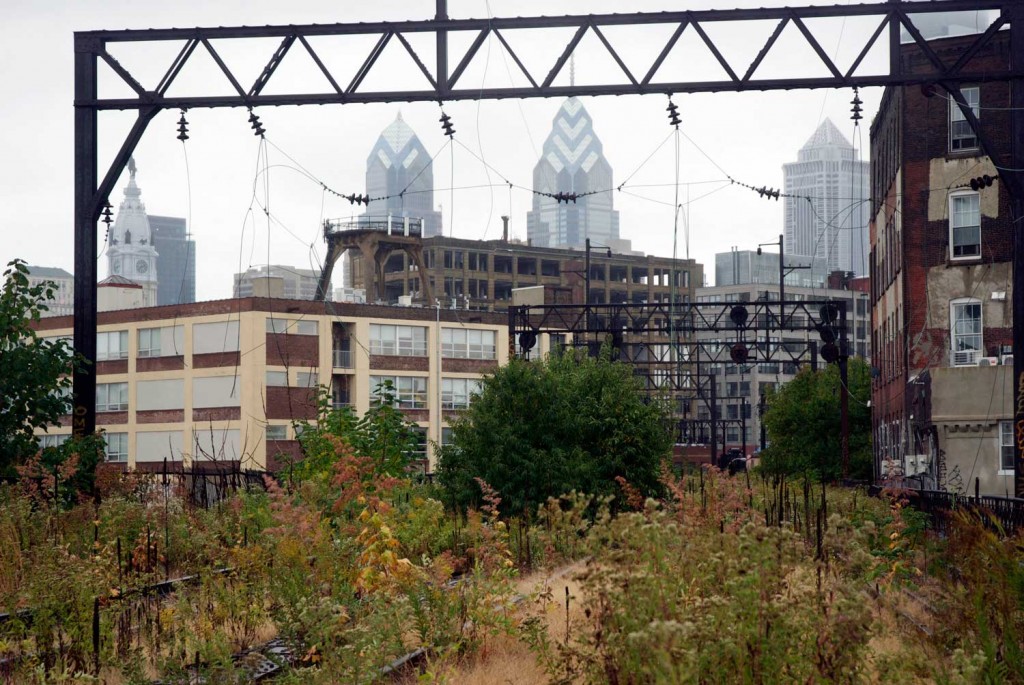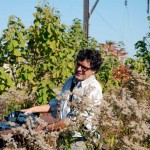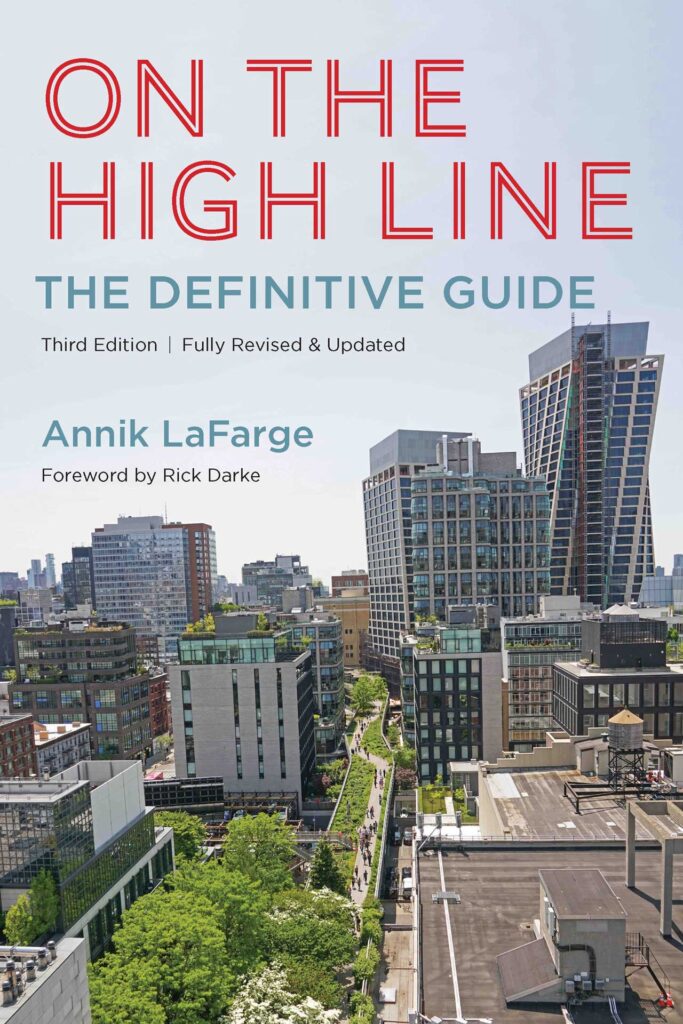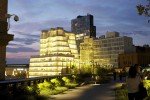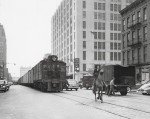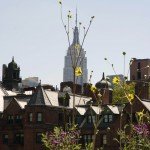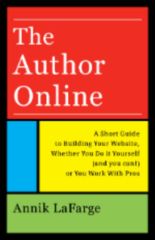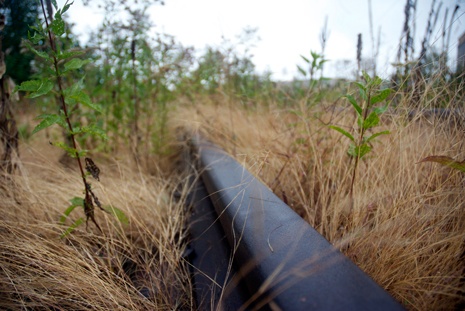
All over the country – and indeed the world – the impact of the High Line is being felt. Every week, it seems, brings a new story of someone who’s dreaming of a park made from an old railway, and in many places those dreams are becoming reality.
This Fall I made two trips to Philadelphia to walk the Reading Viaduct, a former elevated railroad that offers stunning views of the Philadelphia skyline as well as intimate glimpses of everyday life in the streets below. Just like the High Line.
My friend Rick Darke, who has been writing about and photographing the High Line since 2002, introduced me to Paul Van Meter of VIADUCTGreene and John Struble of the Reading Viaduct Project, two community leaders who are working to bring this old elevated railroad back to life as an urban greenway. This is a particularly interesting project because the 4.5 mile extent of the former railroad includes both an elevated viaduct and an underground section. The mile-long elevated part consists of two branches that would connect very different neighborhoods: Chinatown towards the southern end, and an area settled by artists working in loft spaces just a bit farther north.
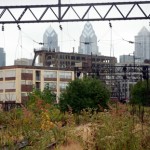 As in New York, the Philadelphia viaduct offers a window into the Industrial Revolution and the days when cities were places where things were made and then shipped all over the country and the world. You can still see the faded lettering on the sides of former industrial buildings that once served as automobile, bicycle, shoe, glass and balloon factories. But most stunning of all are the architectural forms that straddle the viaduct: vertical steel structures known as catenaries that arch across the tracks and once carried electrical current from the high wires and transferred it down to the locomotives. Go here to read more about the Reading Viaduct and see photographs.
As in New York, the Philadelphia viaduct offers a window into the Industrial Revolution and the days when cities were places where things were made and then shipped all over the country and the world. You can still see the faded lettering on the sides of former industrial buildings that once served as automobile, bicycle, shoe, glass and balloon factories. But most stunning of all are the architectural forms that straddle the viaduct: vertical steel structures known as catenaries that arch across the tracks and once carried electrical current from the high wires and transferred it down to the locomotives. Go here to read more about the Reading Viaduct and see photographs.
Walking the elevated part of Philadelphia’s abandoned railway made me finally understand what so many early visitors to the High Line saw and fell in love with when today’s “park in the sky” was a wild urban garden. That in turn made me fascinated to learn about the many other efforts that are taking place around the country and the world. In cities across America community leaders and urban planners are looking to the High Line for inspiration. One can sense an exciting new trend in urban reclamation, like a heartbeat pulsing from one end of the country to the other.
Thus a new feature on LivinTheHighLine, “Urban Greenways,” which identifies these efforts and provides photos where available. As time goes by I’ll update the list, add cities and provide progress reports, and I’ll be adding international projects as well.
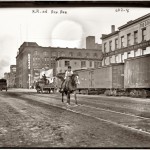 Railroads came to Manhattan in the 1830s; the first was the Harlem, which opened in February 1832. In those days rail cars were pulled by horses and could attain a speed of 7 miles per hour. It was two years before a steam locomotive would hit the streets of New York, and it exploded just eight months later. But the railroad race was on, and it’s one of the great stories of this country. Seeing urban greenways developing from our abandoned railroads is exciting both for the joys that a beautiful park can offer, but also for the “teachable moment” they can provide.
Railroads came to Manhattan in the 1830s; the first was the Harlem, which opened in February 1832. In those days rail cars were pulled by horses and could attain a speed of 7 miles per hour. It was two years before a steam locomotive would hit the streets of New York, and it exploded just eight months later. But the railroad race was on, and it’s one of the great stories of this country. Seeing urban greenways developing from our abandoned railroads is exciting both for the joys that a beautiful park can offer, but also for the “teachable moment” they can provide.
When New York’s elevated park opened in 2009 it did so with an uncommon dedication to educating young and old alike, providing programs devoted to art, entertainment, cultural history, and even astronomy. Just a year later, the Times observed that “The High Line has become, like bagels and CompStat, another kind of New York export.” Friends of the High Line created a model that is now inspiring other groups around the country to reach well beyond the noble goal of creating a beautiful public space. Many of the projects covered in Urban Greenways, like the Harsimus Stem Embankment, plan to include outdoor classrooms for kids and other features that would provide historical context.
This was an important year for the High Line: it doubled the walkable space of its gardens and announced major progress on the development of the final section, which majestically wraps around the West Side Rail Yards between 30th – 34th Streets. (Joshua David and Robert Hammond also published a book that tells the whole story of how the park came to be…) As the year winds down, it’s clear that there is much to look forward to, both here and all over this great country of ours.
Happy holidays, everyone. And as you think about those last-minute charitable donations, remember that all of these places are steered and guided by non-profits, and depend to a large extent on donations from the public. Each of the Urban Greenways listed here includes links to the websites of the organization behind it, where you’ll quickly find a way to donate. Here is the link to Friends of the High Line.
Visit Urban Greenways: Other Projects Around the World.
[Note: if this subject interests you, you’ll find a very interesting list of “Relevant Reading” on the VIADUCTGreene website that includes books about Landscape, Urbanism and Railroading. It’s a must-read list for anyone interested in the powerful new trends in urban design and planning that are sweeping the country. There’s also an excellent new documentary, “Urbanized,” by Gary Hustwit, which you can now watch online if it’s not available in a theater nearby.]


